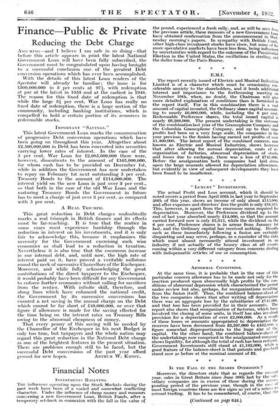ABNORMAL CONDITIONS.
At the same time, it is probable that in the case of this particular concern allowance has to be made not only for the reaction produced upon abnormally high profits by the con- ditions of abnormal depression which characterized the period under review but also, perhaps, for reorganizations resulting from the fusion itself. Thus, the combined balance-sheet of the two companies shows that after writing off depreciation there was an aggregate loss by the subsidiaries of £741,000, and that loss has been provided for in their accounts. The report also shows that reorganization of factories, which have involved the closing of some units, in itself has also involved provision for a depreciation of over 12,000,000. As a result of these losses or amounts appropriated to depreciation the reserves have been decreased from 13,267,000 to 1432,000, a figure somewhat disproportionate to the huge size of the capital. On the other hand, the combined balance-sheet of the undertakings now comprised in the amalgamated companY shows liquidity, for although the total of cash has been reduced, Government Investments still stand at 11,192,000, while .3 good feature of the balance-sheet is that patents and goodwill stand now as before at the nominal amount of 12.










































 Previous page
Previous page